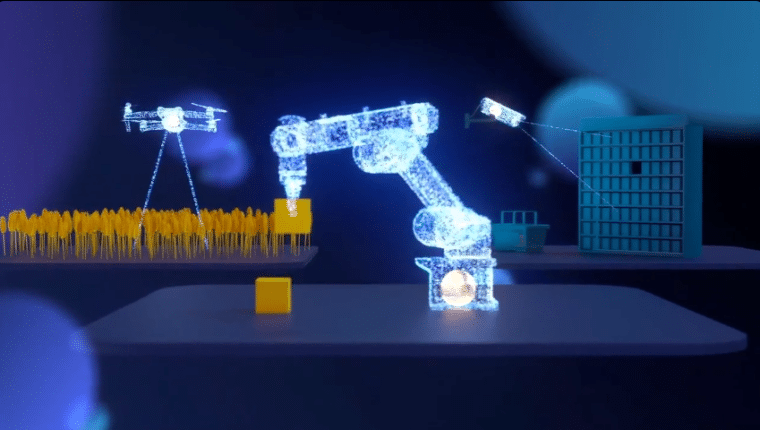
The European startup Axelera AI announced yesterday that it raised $50 million in its Series A funding round to scale its artificial intelligence solutions for edge computing. The round was led by Innovation Industries while other venture capital firms including CDP Venture Capital, Verve Ventures, and Fractionelera also participated.
Axelera AI provides an AI acceleration platform powered by in-memory computing and RISC-V chip technology that enables AI inference at the edge. Since announcing its product, over 350 customers have shown interest and nearly 100 have requested samples for testing.
The new funding will be used to expand Axelera AI’s global operations and launch the first generation of its AI platform. The company has already begun hiring in the U.S. with the appointment of Jonathan Ballon as Chairman and Sander Arts as Marketing Advisor. Axelera AI is also looking to fill key roles like a Vice President of Sales and technical support team.
Also read: Best AI Stocks to Invest in 2023
The CEO of Axelera, Fabrizio Del Maffeo, said: “In just 20 months, we’ve achieved incredible milestones… This is a testament to our trailblazing technology and the unwavering trust our investors place in our extraordinary team.” Investors praised Axelera AI’s potential to capture significant market share in edge AI with its combination of hardware and software solutions.
The funding round highlights Axelera AI’s strong momentum and positions the company for rapid growth to capitalize on customer demand for its edge AI solutions. Axelera AI will demonstrate its Metis AI platform at the upcoming Embedded Vision Summit 2023 in Santa Clara.
Del Maffeo founded Axelera AI along with Evangelos Eleftheriou – the company’s Chief Technology Officer. Before starting Axelera, Del Maffeo served as Managing Director and Vice President of a business unit of the ASUS Group while Evangelos worked for 35 years as a researcher for IBM.
Axelera AI Aims to Make the Technology More Efficient
At the heart of Axelera AI’s disruptive solutions are four key technologies that enable unmatched performance, efficiency, and accessibility for edge AI.
Digital in-memory computing lies at the core of the company’s value proposition. It uses SRAM memory arrays that both store data and perform computations – multiplying and accumulating data in each memory cell per cycle. This significantly improves performance and energy efficiency.
Also read: Sony and Raspberry Pi Partner on AI Edge Computing to Leverage its Advantages
The startup also utilizes the open RISC-V instruction set architecture. RISC-V benefits from a large ecosystem that helps Axelera AI deploy neural networks like Tensorflow Lite at the edge.
Their accelerator technology is implemented in standard CMOS process technology using proven and cost-effective materials and manufacturing processes. This allows Axelera AI to easily scale performance as semiconductor technology advances.
Axelera AI employs quantization techniques and mapping tools to optimize neural networks for their mixed-precision accelerators. This reduces computational load and increases energy efficiency while minimizing accuracy loss – critical for edge AI performance and efficiency.
These technologies come together to deliver industry-leading performance from Axelera AI’s solutions: up to 214 TOPs from a single processing unit. Their solutions offer usability through integrated edge AI offerings that are easy to deploy and use.
Minimal power consumption – suiting edge applications with limited power budgets – and an edge price point to enable complex AI applications at a fraction of the cost of cloud AI.
Enhancing Computer Vision and Edge Devices’ Data Processing Capabilities
Understanding key concepts like edge computing, edge devices, and computer vision provides important context for Axelera AI’s edge AI solutions.
Edge computing is about placing compute resources close to where data is created so data processing can occur with very low latency. This improves response times, privacy, and cost efficiency compared to cloud data centers.
Also read: 10 Best Crypto VC Firms & Web3 Funds 2023
Many types of devices operate at the edge. Edge servers are data center class machines located at the network edge in factories, hospitals, and other environments. These run interchangeable workloads like AI and analytics software. Edge devices are purpose-built for specialized tasks. Examples include smart cameras, sensors, and actuators. They have limited computing capabilities and operate in more constrained environments.
Edge computing architectures often combine edge devices, servers and cloud infrastructure. Edge devices aggregate data at the network’s edge where edge servers process and analyze it locally before transmitting only needed information to the cloud. The sheer number of edge devices is massive and growing rapidly. They are enabling new solutions and business opportunities across industries. Managing these edge devices at scale will be crucial for organizations.
Computer vision seeks to enable machines to “see” and interpret visual data as humans do. Computer vision applications use algorithms trained on massive image data sets. To analyze an image, a camera or sensor captures it and sends it to an interpreting device. Using pattern recognition, the device identifies known patterns in the image and determines what it depicts. It then provides the requested information based on its analysis.
Deep learning techniques allow computer vision to continuously improve its accuracy over time. Neural networks allow computer vision programs to retain information from each image, making them smarter with more data. Axelera AI’s solutions aim to accelerate both computer vision and natural language processing tasks at the network edge. Their unique technologies target the performance, efficiency and accessibility requirements of edge AI applications.
Other Related Articles: